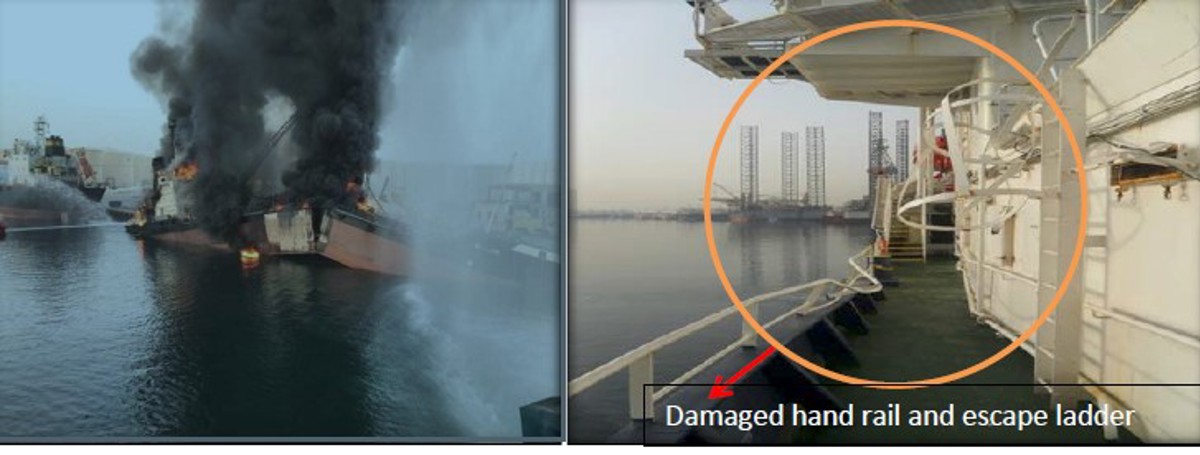Catastrophic fire and explosion on nearby vessel
- Safety Flash
- Published on 25 May 2017
- Generated on 9 December 2025
- IMCA SF 12/17
- 1 minute read
Jump to:
A vessel was double-banked alongside engaged with routine maintenance jobs, when a fire broke out on a vessel transporting a petroleum product which was berthed alongside at a berth 130 m away.
What happened?
There was a massive explosion and the tanker broke in to two. The Port emergency operation room was alerted immediately and the firefighters prevented the blaze from spreading to adjacent ships, and prevented oil spillage.
Unfortunately, one crew member on the burning vessel was killed, four others suffered burns, and sixteen sailors were evacuated safely.
Our Member’s vessel sustained damage on the starboard side escape ladder and 5 m of railings due to flying debris following the explosion. An emergency muster took place for head count, damage was reported to Port control, and engines were started immediately for emergency cast off to a safe location.
[This incident took place in Sharjah on 13 May and was reported in local news media.]

Lessons learned
- Immediate action or response should be in place to cast off the vessel from the area in case of an emergency.
- All should be vigilant to what is happening on surrounding vessels.
IMCA Safety Flashes summarise key safety matters and incidents, allowing lessons to be more easily learnt for the benefit of the entire offshore industry.
The effectiveness of the IMCA Safety Flash system depends on the industry sharing information and so avoiding repeat incidents. Incidents are classified according to IOGP's Life Saving Rules.
All information is anonymised or sanitised, as appropriate, and warnings for graphic content included where possible.
IMCA makes every effort to ensure both the accuracy and reliability of the information shared, but is not be liable for any guidance and/or recommendation and/or statement herein contained.
The information contained in this document does not fulfil or replace any individual's or Member's legal, regulatory or other duties or obligations in respect of their operations. Individuals and Members remain solely responsible for the safe, lawful and proper conduct of their operations.
Share your safety incidents with IMCA online. Sign-up to receive Safety Flashes straight to your email.